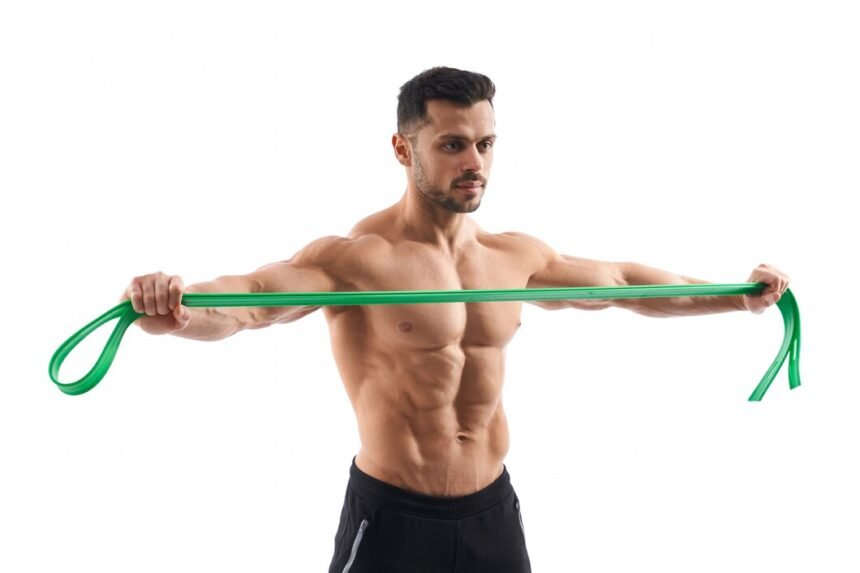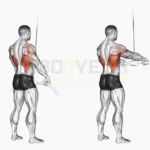Resistance Band Shrugs: Exercise Overview
Resistance band shrugs are a straightforward and effective isolation exercise designed to target the upper trapezius muscles, with secondary engagement of the levator scapulae and rhomboids. By using a resistance band, this exercise provides variable tension that mimics a blend of cable and dumbbell shrugs, making it an excellent option for home workouts to build neck and upper-back strength. Ideal for enhancing shoulder aesthetics and supporting posture, resistance band shrugs are a versatile addition to upper-body workouts, shoulder routines, or full-body training programs. They are beginner-friendly and adaptable for lifters of all levels aiming for both aesthetic and functional goals (Schoenfeld, 2010).
Alternative Exercise: For a home-based alternative that targets similar muscle groups, try resistance band upright rows. Note that this is a compound exercise that emphasizes the deltoids and traps, making it less focused on isolating the upper trapezius compared to shrugs.
How to Perform Resistance Band Shrugs
- Stand with feet shoulder-width apart, placing the center of a resistance band under the soles of your shoes to secure it.
- Grasp the band handles with a neutral grip (palms facing your body), arms extended by your sides, and stand upright with your core engaged—this is your starting position.
- Squeeze your shoulder blades together slightly, then lift your shoulders straight up toward your ears, pulling the band handles upward.
- Pause briefly at the top, squeezing your traps for maximum contraction.
- Slowly lower your shoulders back to the starting position, maintaining control and tension in the band.
- Repeat for the desired number of repetitions.
Tips for Optimal Performance
- Control the Movement: Perform the shrug and descent slowly to maximize trap activation and avoid momentum, enhancing muscle engagement (Schoenfeld, 2016).
- Experiment with Shoulder Blade Position: Try keeping your shoulder blades retracted throughout or allow them to naturally contract as you lift your shoulders to find the best trap engagement for your body (McGill, 2010).
- Avoid Shoulder Rolling: Skip rolling your shoulders if it causes joint discomfort, as it may strain the shoulder girdle; focus on a straight up-and-down motion (Wirth et al., 2016).
- Maintain Proper Posture: Keep your core braced and spine neutral to prevent leaning or arching, ensuring the traps do the work.
- Breathe Properly: Exhale as you lift your shoulders and inhale as you lower them to support core stability and muscle oxygenation.
- Adjust Band Tension: Choose a band resistance that allows controlled form for your target rep range (e.g., 12–15 reps for hypertrophy) to avoid compensatory movements.
Variations
- Single-Arm Shrugs: Perform the exercise one arm at a time to address imbalances and increase unilateral focus.
- Pause Shrugs: Hold the top position for 2–3 seconds to intensify the contraction and enhance mind-muscle connection.
- Dynamic Shrugs: Add a slight forward or backward lean to vary the angle and target different portions of the traps, ensuring joint comfort.
Sculpting traps with band shrugs? See their role in our Ultimate Guide to Muscle Groups for upper back power.








